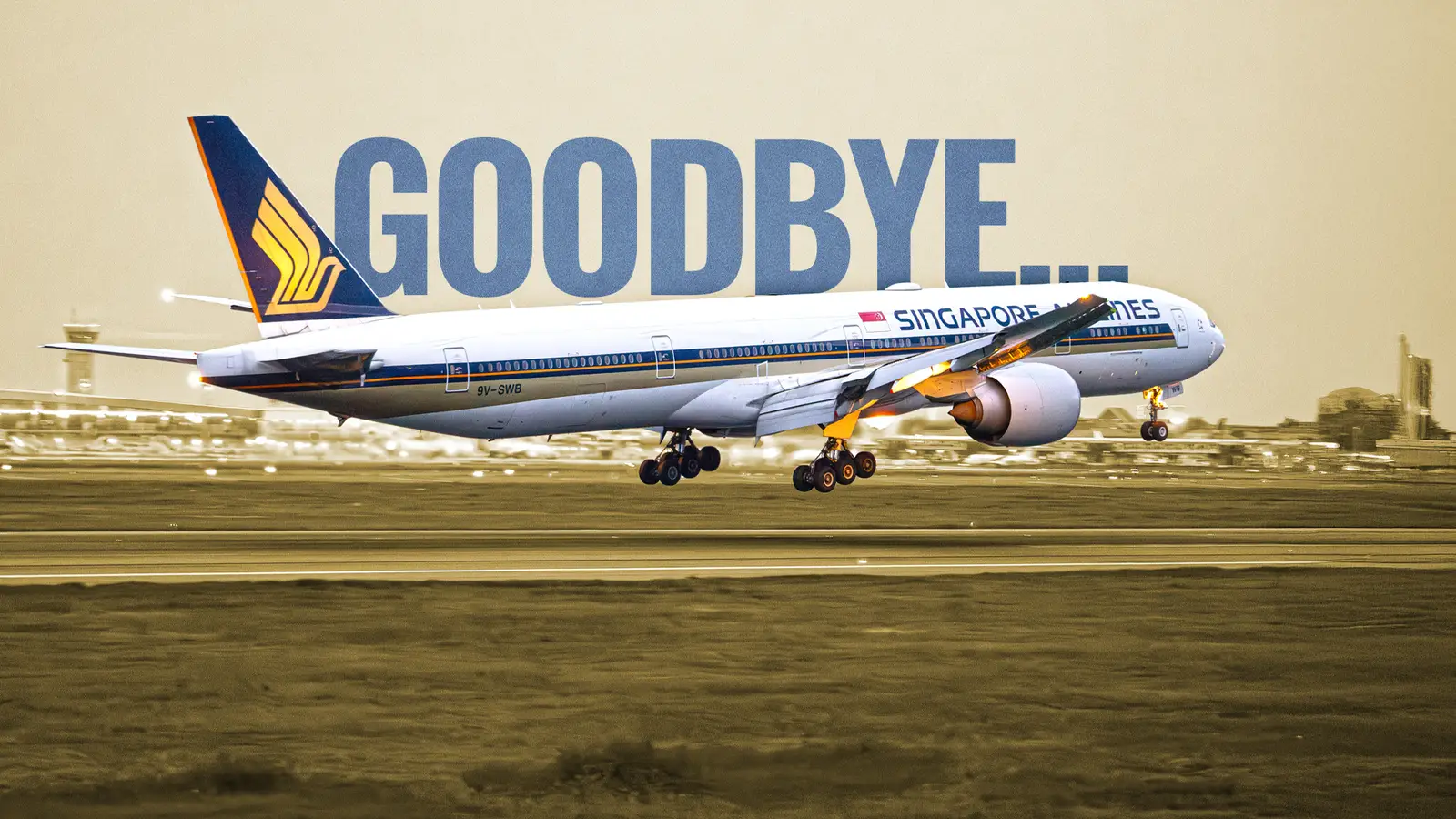Copyright Simple Flying

Since entering commercial service in 2004, the Boeing 777-300ER has played a transformative role in global aviation. Its long range and high capacity enabled airlines to operate some of the world’s longest and most prestigious routes with greater efficiency. Boeing ultimately produced 837 of the type, making it the most successful variant of the 777 family. Yet when the final 777-300ER was quietly delivered in late 2024, it marked the end of an era without the usual fanfare typically reserved for a final aircraft rollout. In this article, we will take a closer look at some of the reasons why Boeing ended production of the 777-300ER. We will also consider the legacy that the aircraft continues to have on the commercial aviation industry and the future of the 777 series. The Final Boeing 777-300ER In December 2024, Boeing delivered what is widely regarded as the final 777-300ER to Ethiopian Airlines. Since then, the US manufacturer has had no remaining 777-300ERs on its order book, aside from a lone order for Pakistan International Airlines, which appears unlikely to be fulfilled. This effectively marks the quiet conclusion of the 777-300ER program. The final aircraft to be delivered, registered as ET-BGG, is one of five Boeing 777-300ERs that make up Ethiopian Airlines' fleet. Each of the carrier's 777-300ERs is able to accommodate up to a maximum of 399 passengers in a two-class configuration - 34 in business class and 365 in economy class. Flight tracking data from Flightradar24 shows that from its hub at Addis Ababa Bole International Airport (ADD), the Star Alliance carrier deploys its fleet of 777-300ERs to regional destinations such as Dubai International Airport (DXB), Nairobi Jomo Kenyatta International Airport (NBO), and Kinshasa N'Djili International Airport (FIH), as well as on several long-haul routes to the likes of Washington Dulles International Airport (IAD) and Guangzhou Baiyun International Airport (CAN). About The Boeing 777-300ER The Boeing 777-300ER was officially introduced as a response to growing demand for a high-capacity, long-range twin-engine aircraft capable of replacing older four-engine jets such as the Boeing 747-400 and Airbus A340. Building on the success of the original 777-200 and 777-300 variants, Boeing launched the 777-300ER program in 2000, with the aim of creating an aircraft that combined the passenger capacity of the 777-300 with significantly improved range and performance. At the heart of the Boeing 777-300ER’s design was the powerful General Electric GE90-115B engine, which was at the time the most powerful commercial aircraft engine ever built. This, combined with structural enhancements such as a strengthened landing gear, raked wingtips, and a higher maximum takeoff weight, enabled the aircraft to fly up to 8,500 miles (13,650 km) with a full passenger payload, making it ideal for long-haul routes. The first flight of the Boeing 777-300ER took place on February 24, 2003, and after a comprehensive flight testing and certification program, the aircraft was certified by the US Federal Aviation Administration (FAA) in early 2004. The aircraft's launch customer, Air France, took delivery of the first 777-300ER in April 2004 and placed it into service shortly after on a flight from the SkyTeam carrier's primary hub at Paris Charles de Gaulle Airport (CDG) to New York John F. Kennedy International Airport (JFK). The 777-300ER's large business and first class cabins made it the perfect aircraft to deploy on such premium transatlantic routes. Airlines Loved The Boeing 777-300ER From the outset, the Boeing 777-300ER proved to be a game-changer in long-haul aviation. Airlines from around the world appreciated the aircraft's ability to carry over 360 passengers in a typical three-class configuration while delivering better fuel efficiency and lower operating costs than the four-engine aircraft it was designed to replace. The aircraft also benefited from ETOPS (Extended-range Twin-engine Operational Performance Standards) certification, allowing it to fly long distances over oceans and remote areas, opening new non-stop routes and improving scheduling flexibility. Fuel efficiency was another major factor contributing to the popularity of the Boeing 777-300ER. The aircraft was powered by the powerful yet efficient General Electric GE90-115B engines, which delivered significant fuel savings compared to older widebody aircraft. Its twin-engine design meant lower fuel burn and reduced maintenance costs compared to four-engine aircraft, making it more economical to operate on long-haul routes. Passenger comfort was also a significant selling point, with the Boeing 777-300ER's wide fuselage allowing airlines to offer more spacious and comfortable cabins, including wider seats and aisles, and later, private suites for passengers in first and business class. Advanced cabin systems and quieter engines enhanced the overall experience for passengers. Lastly, Boeing’s strong global support network for maintenance and parts helped airlines integrate the 777-300ER smoothly into their fleets. The commonality with other Boeing aircraft also helped reduce costs for carriers operating mixed Boeing fleets. The World's Largest Operators Of The Boeing 777-300ER The latest data from ch-aviation shows that Emirates is currently by far the world's largest operator of the Boeing 777-300ER. The carrier, based at Dubai International Airport (DXB) has a staggering 119 777-300ERs in its fleet, operating the aircraft in a variety of different cabin configurations, ranging from a total passenger capacity of 324 to 421. Emirates shows no sign of falling out of love with the 777-300ER anytime soon, with a significant portion of the carrier's fleet being retrofitted to include its latest premium economy cabin. The world's largest operators of the Boeing 777-300ER are outlined in the table below: Why Boeing Ended Production Of The Boeing 777-300ER Boeing ended production of the 777-300ER in 2024 due to a combination of production challenges, evolving market dynamics, and technological advancements. One significant factor was the ongoing production and supply chain issues faced by the US manufacturer, with delays and parts shortages also exacerbated by labor disputes. These challenges increased costs and slowed deliveries, making it harder for Boeing to justify continuing production of an aging design. At the same time, airlines have increasingly turned toward more fuel-efficient aircraft, and the Boeing 777-300ER, although revolutionary in its time, simply cannot compete with more modern aircraft such as the Boeing 787 and Airbus A350. These newer aircraft offer substantial improvements in fuel burn, emissions, and operating costs, and are better aligned with airlines’ growing focus on sustainability and lower environmental impact. Market trends have also shifted significantly in recent years, as seen by the rise of smaller long-haul aircraft such as the Boeing 787, Airbus A350, and even the narrow-body Airbus A321XLR. Collectively, these aircraft have changed airline fleet strategies, allowing carriers to operate thinner, point-to-point routes with a high degree of flexibility to better match passenger demand. This is in contrast to the Boeing 777-300ER, which was designed specifically to carry a high number of passengers on key routes. Finally, Boeing’s transition to the next-generation 777X also played a key role in ending 777-300ER production. By focusing on the upcoming 777X, Boeing aims to provide a more competitive product that addresses current market demands and replaces the 777-300ER’s role in global fleets. Introducing the Boeing 777X The Boeing 777X represents the next generation of the highly successful 777 family, designed to meet the evolving needs of the global aviation market. Launched in 2013, the 777X program aims to combine the proven reliability of the original 777 with the cutting-edge technologies seen on the likes of the 787 to deliver greater efficiency, enhanced performance, and improved passenger comfort. The Boeing 777X series consists primarily of two variants: the larger 777-9 and the slightly smaller 777-8. Both models feature new composite wings with folding wingtips, representing a first for commercial aircraft and allowing for a wingspan of 235 ft that folds to 212 ft on the ground. This design improves aerodynamic efficiency and fuel economy by increasing wingspan in flight without compromising compatibility with existing airport infrastructure. Powered by the advanced General Electric GE9X engines, the Boeing 777X offers significant improvements in fuel consumption and emissions compared to its predecessors. The GE9X is the largest and most fuel-efficient engine ever built for a commercial airliner, contributing to an estimated 10% reduction in fuel burn and emissions compared to the 777-300ER. The Boeing 777X was originally due to enter commercial service in 2020, but several delays and setbacks have since pushed this back to early 2027. Lufthansa is set to be the aircraft's launch customer when it is eventually delivered, with the German flag carrier expecting a total of 20 passenger 777-9s in the years to follow. Perhaps unsurprisingly, Emirates is expected to soon become the world's largest operator of the 777X, with a total of 205 777Xs, made up of 35 777-8s and 170 777-9s. The other airlines with major 777X orders are shown in the table below: The Boeing 777-300ER revolutionized long-haul air travel with its blend of range, capacity, and fuel efficiency, and the aircraft soon became a workhorse for airlines worldwide, replacing older four-engine jets and enabling non-stop intercontinental routes. The 777-300ER's legacy lies in transforming fleet strategies and enhancing passenger comfort for nearly two decades, and although production has now ended, it will undoubtedly continue to play a major role in passenger aircraft fleets around the world for years to come.



